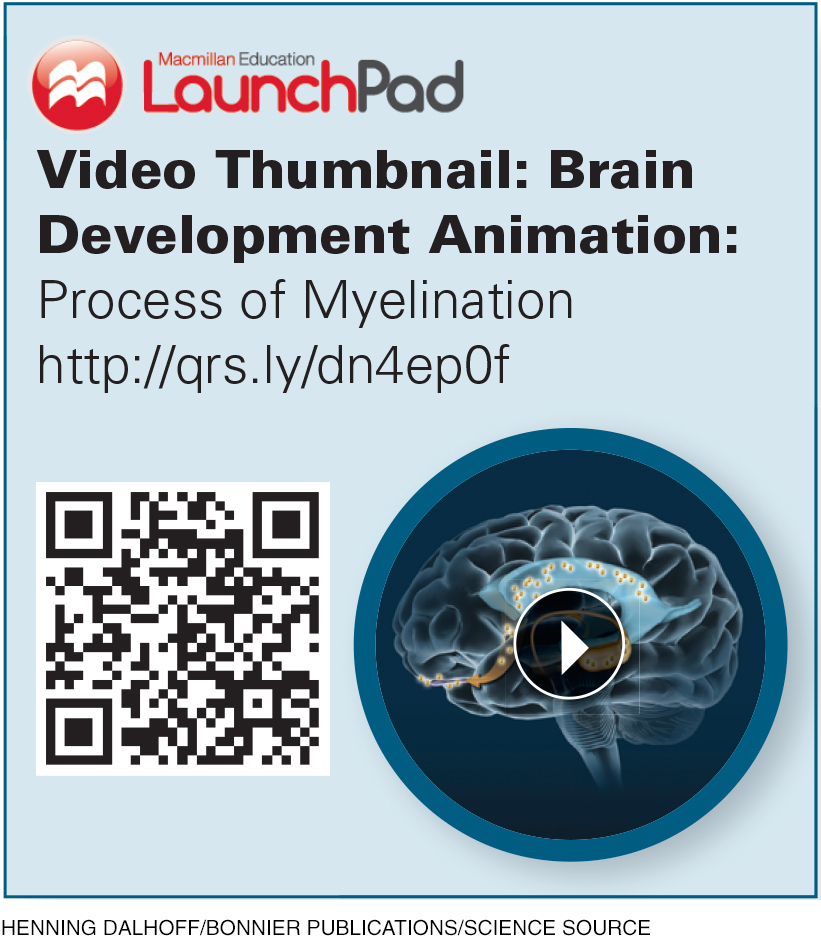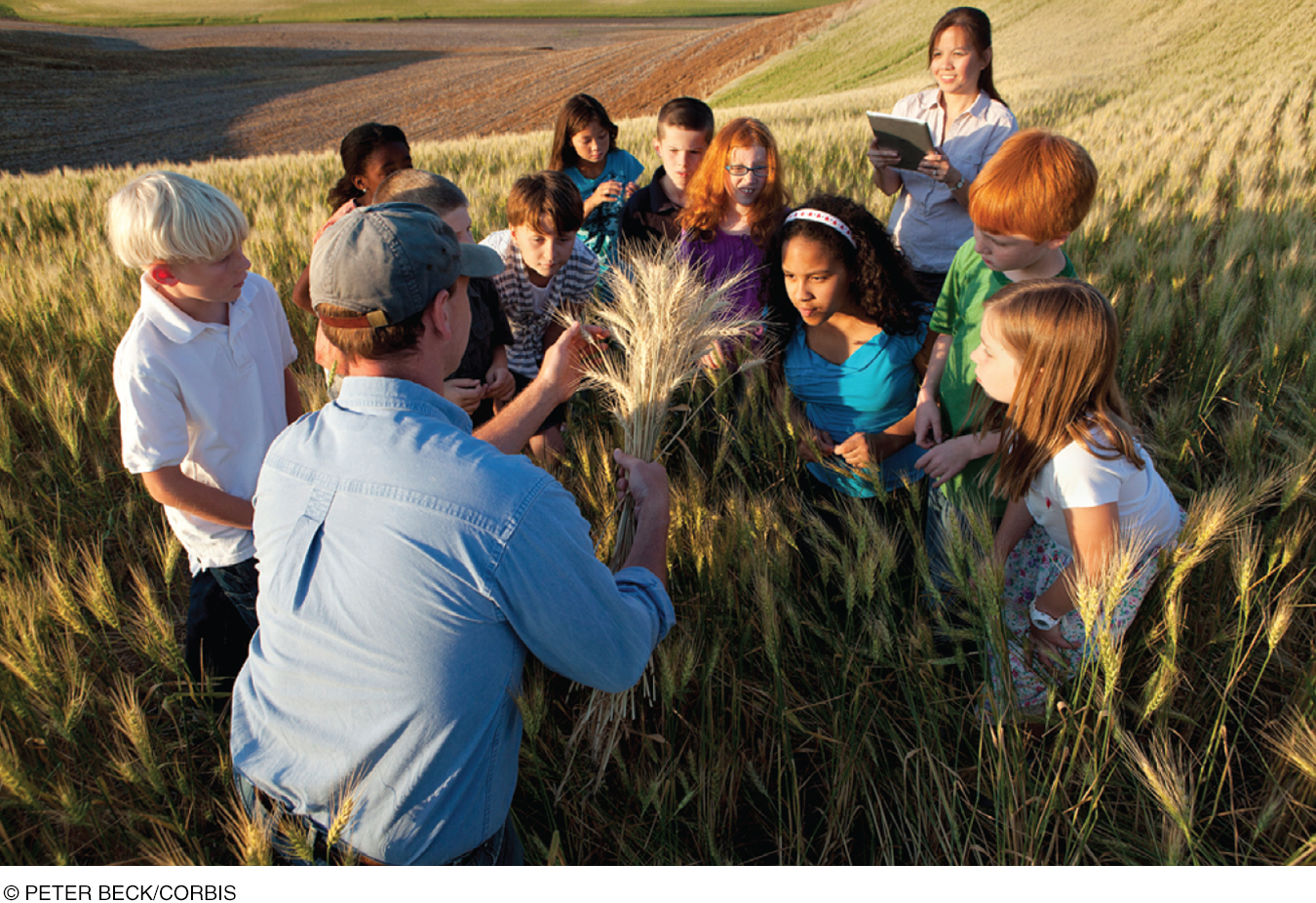Renewed Emphasis on Critical Thinking in the Pedagogical Program
We all need to be critical thinkers. Virtually every page of this book presents not only facts but also questions. A new marginal feature, Think Critically, encourages student reflection and analysis. There are no pat answers to these questions: They could be used to start a class discussion or begin a long essay.
Every chapter begins with a few What Will You Know? questions, one for every major heading. Of course, much of what readers will learn will be reflected in new attitudes and perspectives—
In addition, after every major section, What Have You Learned? questions appear. They are designed to help students review what they have just read, a pedagogical technique proven to help retention. Ideally, students will answer the learning objective questions in sentences, with specifics that demonstrate knowledge.
Some items on the new lists are straightforward, requiring only close attention to the chapter content. Others require comparisons, implications, or evaluations. Key terms are indicated with bold print and are defined in the margins as well as the glossary, because expanded vocabulary aids expanded understanding. To help students become better observers, occasional “observation quizzes” accompany a photo or figure. The hope is that students will learn to look closely at life around them.
As a professor myself, I continue to seek ways to deepen knowledge. Cognitive psychology and research on pedagogy finds that vocabulary, specific knowledge, attention to experience, and critical thinking are all part of learning. This book and these features are designed to foster all four.
Updated Features: Opposing Perspectives, A View from Science, and A Case to Study
Special topics and new research abound in life-
Visualizing Development

Information is sometimes better understood visually and graphically. Carefully chosen, updated photos and figures appear on almost every page to accomplish this, with, as always, captions that explain and increase knowledge. In addition, every chapter of this new edition includes a full-
These infographics explain key concepts, from brain development to marriage rates, often with data that encourage students to think of other nations, other cultures, other times. My three awesome editors and I have worked closely with noted designer Charles Yuen to create these infographics, hoping they reinforce key ideas.
New Online Data Connections Activities
Understanding how scientists use data helps students realize that the study of human development is not just a matter of personal experience and common sense, but goes far beyond that—
For example, students discover how rates of smoking differ by gender or age during adolescence, which probably is not what they think. These interactive activities will make students more engaged and active learners, while deepening their understanding of the importance of quantitative data. Instructors can assign these activities in the online LaunchPad that accompanies this book.
New Integration with LaunchPad

Video Thumbnail: Brain Development Animation: Process of Myelination
Throughout the book, the margins include LaunchPad call-
Child Development and Nursing Career Correlation Guides
Many students taking this course hope to become nurses or early-
New Research Throughout
Life-
Especially to help professors who taught with the earlier texts, or students who have friends who took the course a few years ago, highlights of updates in the text appear below.
New A View from Science: Are Children Too Overweight?
In the section The Historical Context, a new discussion of how public perception of marijuana use illustrates the impact of cohort on attitudes and behavior. A new figure shows how support for marijuana legislation has changed over the years.
New U.S. poverty data in the section The Socioeconomic Context.
New figure on the Gini index, which measures income equality.
Discussion of gender differences and neurosexism added to illustrate the difference-
equals- deficit error. New Visualizing Development: Diverse Complexities, which shows regional and age differences in ethnicity in the United States.
New figure depicting neurogenesis added to Development Is Plastic.
The story of David, the author’s nephew, is now the subject of A Case to Study.
New two-
page infographic: Highlights of the Science of Human Development. New discussion of how evolutionary theory offers explanations for many human phenomena, such as morning sickness, toddlers’ attachment to parents, and adolescent rebellion.
New example illustrating the experiment: Do summer jobs prevent juvenile delinquency?
Discussion of e-
cigarette use to show how longitudinal research is needed to determine whether certain substances are harmful. Hydrofracking and e- waste are mentioned as well. New examples of cross-
sequential research: self- esteem in late adulthood and substance use disorder. New example of correlation: U.S. counties with more dentists have fewer obese residents.
The recent Ebola epidemic used to illustrate ethical dilemmas researchers must navigate.
New chapter-
opening narrative about my daughter giving birth to her second child. Ebola as it relates to genetic diversity.
Additional discussion of how similar the human genetic code is to that of other animals.
Discussion of HapMap research omitted and replaced with specific examples of how subtle differences in alleles can have both minor and major effects (e.g., apoE2 versus apoE4 and BRAC1 versus BRAC2).
In the section Twins, new mention of older mothers and vanishing twins.
New discussion of epigenetics, including type 2 diabetes, drug use, and loneliness.
New mention of IVF and stem cells analyzed for disease.
Additional discussion of ethical ramifications of resuscitating a non-
breathing, extremely preterm infant. New photo of fetus at 27 weeks post-
conception. New discussion of World Health Organization recommendations and statistics regarding c-
sections, as well as an updated figure. Huntington’s disease discussed more thoroughly in Gene Disorders.
Table describing the effects and prevention of teratogens has been omitted and now comprises an interactive Data Connections activity, available in the online LaunchPad.
The figure Critical Periods in Human Development has been heavily revised with more realistic anatomical art.
New discussion of the importance of careful consultation with doctors about herbal medicine, over-
the- counter medications, and psychoactive drug use.  Mutual Joy Ignore this dad’s tattoo and earring, and the newborn’s head wet with amniotic fluid. Instead recognize that, for thousands of years, hormones and instincts propel fathers and babies to reach out to each other, developing lifelong connections.Page xvii
Mutual Joy Ignore this dad’s tattoo and earring, and the newborn’s head wet with amniotic fluid. Instead recognize that, for thousands of years, hormones and instincts propel fathers and babies to reach out to each other, developing lifelong connections.Page xviiNew discussion of how some states are enacting laws that incarcerate pregnant women for using alcohol and drugs while pregnant.
New A View from Science: Conflicting Advice.
New section Prenatal Testing discusses false positives and how early pregnancy testing can cause undue anxiety.
New A Case to Study: False Positives and False Negatives.
Failure to thrive discussed as part of explanation of percentile rankings.
Updated discussion of sleep moved ahead of brain development.
In the section on the senses, new 3D image of parts of brain where hearing occurs.
New discussion of infant reflexes.
New discussion on cross-
modal perception and synesthesia in infants. New A Case to Study: Scientist at Work, on Susan Beal’s research on SIDS.
New A View from Science: From Breast to Formula and Back explores historical and cultural trends in breast-
and formula- feeding. A-
not- B error, as well as research of Renee Baillargeon, added to my explanation of Piaget’s object permanence experiment. fNIRS (functional near infrared spectroscopy) added to the list (and illustration) of techniques used by neuroscientists to understand brain function.
Revised and expanded discussion of information-
processing theory. New discussion of mean length of utterance (MLU) as a measure of a child’s language progress.
New research on cultural differences in what sounds infants prefer.
New coverage of bilingualism in babies.
New chapter-
opening narrative illustrating caregiver– infant interaction with an exchange between two of my daughters and my newest grandson. Expanded discussion of infants’ experience of fear.
Section on brain growth significantly revised; now includes discussion of cultural differences encoded in the brain, developing social awareness, and early caregiving and cortisol.
New Opposing Perspectives: Mothers or Genes?, which explores whether temperament can change.
Heavily revised Visualizing Development: Developing Attachment.
Discussion of allocare moved to discussion of fathers’ role in child-
rearing. New A Case to Study: Can We Bear This Commitment? recounts the dramatic experience of my friend, illustrating attachment between parents and their children.
New example of how parents can help their young children express emotions in positive ways.
New sections on humanism and evolutionary theories and infant psychosocial development.
Section on infant day care now focuses on North America, Norway, and Australia; includes new A View from Science: The Mixed Realities of Center Day Care.
New chapter-
opening narrative, my memory of trying to fly at age 4. New research on nutrition, including long-
term effects of childhood obesity. Condensed section on food allergies; the just-
right phenomenon omitted. Sections on environmental hazards, injury, and prevention moved to Chapter 6.
New brain scan image showing myelination.
New A Case to Study: Stones in the Belly illustrates preoperational cognition.
Expanded discussion of overimitation.
New A View from Science: Witness to a Crime, regarding children’s eyewitness testimony.
Recent research on the naming explosion and fast-
mapping. New Opposing Perspectives: Culture, Child-
Centered Versus Teacher- comparing child-Directed, centered and teacher- directed approaches to early- childhood education. New Visualizing Development: Early-
Childhood Schooling. New figure of longitudinal data on the Abecedarian Project.
New mention of effortful control.
Addition of the marshmallow test to illustrate self-
control and emotional regulation. New discussion on how and when to praise children.
Elaborated debate about whether play is essential for healthy development.
New discussion of pretend play versus social play.
Page xviii Joy Supreme Pretend play in early childhood is thrilling and powerful. For this 7-
Joy Supreme Pretend play in early childhood is thrilling and powerful. For this 7-year- old from Park Slope, Brooklyn, pretend play overwhelms mundane realities, such as an odd scarf or awkward arm. New Visualizing Development: Less Play, Less Safe?
New discussion of screen time and a figure showing daily screen time for U.S. children.
New A View from Science: Culture and Parenting Style, using Mexican American mothers to show that parenting style is more fluid than previously thought.
Behaviorism, cognitive theory, humanism, and evolutionary theories of gender development now separated into discrete sections.
Prosocial and antisocial behavior condensed; aggression expanded.
New discussion of cultural, regional, socioeconomic, and gender differences in spanking among U.S. parents, as well as longitudinal research on children who are physically punished.
Sections on environmental hazards, injury, and prevention moved from Chapter 5.
Updated coverage on how maltreatment is noticed and defined.
New research on long-
term impact of child maltreatment on development of social skills.
New chapter-
opening narrative about my friend’s son, illustrating the interaction of genes and environment, asking how much parents are to blame for their children’s problems. New statistics on illness and death rates in middle childhood, as well as on oral health.
New research on recess and active play, including a comparison of Texas and Japan.
New research on childhood obesity, including an updated Visualizing Development: Childhood Obesity Around the Globe.
New research on the reduction of asthma in children of Latino parents and caregivers.
Significantly reorganized section on cognition.
New example of hierarchical classification.
Expanded coverage of connections between lobes and regions in children’s brains.
Expanded discussion of international contexts for social interaction and instruction.
New research regarding estimating math proficiency and knowledge of fractions.
Discussion of executive processes within section on control processes.
New The Maturing Brain section discusses reaction time and automatization.
New research on metaphorical understanding and bilingual children.
Section on bilingual education expanded and brought forward.
Recent research about arts education.
Section on international testing revised and expanded.
New A Case to Study: Encouraging Child Learning.
New comparison of the United States and Finland in discussion of why U.S. students perform poorly on international tests.
Added section on the ethnic and economic gap in academic performance in the United States.
New research on attitudes toward the Common Core.
New figure showing percent of U.S. students in public, private or parochial, and home schools.
Second-
language learning as an example of how policy affects education. New section on ethnic diversity in U.S. schools.
IQ and intelligence testing now opens the Developmental Psychopathology section.
New Opposing Perspectives: True Grit.
Updated coverage of ADHD, psychopathology, intellectual disability, and special education, including new figure on percentage of U.S. children who are or have been medicated for emotional or behavioral difficulties. (All terminology use updated to DSM-
5 classifications.)
New chapter-
opening narrative illustrating social development in middle childhood. Reorganized The Nature of the Child section.
Revised section Self-
Concept includes focus on the importance of social comparison.New Opposing Perspectives: Protect or Puncture Self-
Esteem? New examples in Cumulative Stress section—
child soldiers in Sierra Leone, U.S. children temporarily living in homeless shelters, and children exposed to a wildfire in Australia. Page xix Stay Home, Dad The rate of battle deaths for U.S. soldiers is lower for those deployed in Iraq and Afghanistan than for any previous conflict, thanks to modern medicine and armor. However psychological harm from repeated returns and absences is increasing, especially for children.
Stay Home, Dad The rate of battle deaths for U.S. soldiers is lower for those deployed in Iraq and Afghanistan than for any previous conflict, thanks to modern medicine and armor. However psychological harm from repeated returns and absences is increasing, especially for children.Expanded discussion of parentification, including children who survived Hurricane Katrina.
New A View from Science: “I Always Dressed One in Blue Stuff . . .”, which illustrates how siblings raised in the same households do not necessarily share the same environment.
Revised section on family structure and divorce.
New A Case to Study: How Hard Is It to Be a Kid?
Updated Visualizing Development: A Wedding, or Not? Family Structures Around the World.
New research on long-
term implications for children who have been bullied. Reorganized coverage of moral development.
New chapter-
opening narrative about one of my former students. New research on hormones affecting psychopathology in adolescent girls and boys.
New Opposing Perspectives: Algebra at 7 A.M.? Get Real!
In discussion of secular trends, new example of the heights of various U.S. presidents.
New discussion of precocious puberty, including possible environmental causes.
Updated research about stress and puberty.
Mention of importance of family dinners to adolescent nutrition.
New data on nutritional deficiencies.
Discussion of obesity and rates among teenagers in various U.S. states, which introduces section on eating disorders.
Addition of binge eating disorder, newly recognized in DSM-
5. Expanded discussion of how immaturity of the prefrontal cortex leads to risk taking, including new research on texting while driving.
New A View from Science: The Pleasures of the Adolescent Brain.
Addition of three short problems for students to test themselves on intuitive and analytical reasoning.
Revised Visualizing Development: Thinking in Adolescence.
New A Case to Study: “What Were You Thinking?”
Major section on technology and cognition reorganized and substantially revised under the heading Digital Natives.
New section on sexting.
New research on declines in school engagement and performance.
Updated statistics on enrollment in AP classes and college.
New figure on U.S. high school dropout rates.
New chapter-
opening narrative about my parenting during adolescence. Updated research on political party identification among U.S. adults and their adolescent children.
New, separate section on ethnic identity featuring anecdote about racial awareness from a U.S. high school senior.
Enhanced and revised discussion of gender identity, including an explanation of why the DSM-
5 describes gender dysphoria, not gender identity disorder. New coverage of parent–
child conflict, including updated research on parental monitoring. New A Case to Study: An Ignorant Parent—
Me! Updated coverage of peer pressure and influence on adolescent decision making.
New section on social networking among adolescents.
Section on sexual interactions now comprises Human Relationships section.
New research on sexual activity among adolescents and the impact of parental involvement.
Revised section on same-
sex relationships. Page xxNew coverage of sex education and teenage pregnancy internationally.
New A View from Science: Sex Education in School.
New coverage of depression in adolescence, including expanded DSM-
5 diagnoses. Updated research on suicide, suicidal ideation, and parasuicide.
Updated research on adolescent crime and incarceration rates.
Updated coverage of teenage drug use. including e-
cigarettes and marijuana. New Opposing Perspectives: E-
Cigarettes: Path to Addiction or Healthy Choice?
New chapter-
opening narrative about my youngest daughter as an emerging adult. New Opposing Perspectives: A Welcome Stage, or Just WEIRD?
Section on body development substantially revised; now includes discussion of organ reserve, homeostasis, and allostasis formerly in Chapter 12.
New discussion of premarital sex and contraception, and fewer single-
sex colleges. New A Case to Study: An Adrenaline Junkie.
Expanded coverage of alcohol abuse in emerging adulthood.
New longitudinal data and research on graduation rates, college debt, and salary differences between college grads and non-
grads. Revised and expanded section on college contexts, including MOOCs and flipped classes.
Added discussion and research on college and critical thinking.
New figures comparing problem-
solving abilities in many nations. Revised section Identity Achievement, including new research and examples of changing identity status, employment patterns, and personality development.
Extensively updated material on dating, cohabitation, and romance in emerging adults; material on friendships and relationships with parents and peers moved forward.
Significantly reorganized chapter: Exercise, drug use (including new material on prescription and over-
the- counter drug use), and diet begin the chapter. A new section, Losses and Gains, now houses the subsections on appearance, disease in adulthood (new), and sex and fertility (including the material on hormone decline).  Smart Farmer; Smart Teacher This school field trip is not to a museum or a fire station but to a wheat field, where children study grains that will become bread. Like this creative teacher, modern farmers use every kind of intelligence. To succeed, they need to analyze soil, fertilizer, and pests (analytic intelligence); to anticipate market prices and food fads (creative intelligence); and to know what crops and seed varieties grow in each acre of their land as they manage their workers (practical intelligence).
Smart Farmer; Smart Teacher This school field trip is not to a museum or a fire station but to a wheat field, where children study grains that will become bread. Like this creative teacher, modern farmers use every kind of intelligence. To succeed, they need to analyze soil, fertilizer, and pests (analytic intelligence); to anticipate market prices and food fads (creative intelligence); and to know what crops and seed varieties grow in each acre of their land as they manage their workers (practical intelligence).New figures showing U.S. rates of cigarette smoking and lung cancer.
New discussion and research on cancer, including new 3D image of cancer cell.
New data on adult obesity around the world and new material on reducing obesity.
New research on in vitro fertilization.
Revised section The Aging Brain now includes material on adult intelligence.
New A View from Science: Adult IQ.
New research showing how education helps people prepare for and survive disasters.
Section on stress moved to new section Selecting and Protecting; includes new material on posttraumatic growth and weathering.
Updated coverage of the development of expertise in a new, technologically connected era.
New A Case to Study: Jenny, Again.
New updates about marital satisfaction, including cross-
cultural data and research. New material on same-
sex marriages around the globe. Updated coverage of parenting joys and challenges—
including for foster, step, and adoptive parents. New section on culture and caregiving, focusing on elder care internationally, including Japan.
Page xxiNew Visualizing Development: Caregiving in Adulthood.
Discussion of meta-
analysis of job loss and adult happiness. New material on the challenges of balancing work and family, particularly for families with “nonstandard” work schedules.
New A Case to Study: Having It All.
New chapter-
opening narrative about a dinner I attended that challenged my assumptions. Updated coverage of stereotype threat and ageism.
New A View from Science: I’m Not Like Those Other Old People.
New figure on rates of exercise among older adults.
New Opposing Perspectives: Stop the Clock?
Revised section on demographic shift, including new figures depicting demographic pyramids in India and Japan and percentage of population over age 65 in various countries.
New example of how statistics about Alzheimer’s disease are more frightening than reality.
Reorganized Theories of Aging section.
New A Case to Study: Should Older Couples Have More Sex?
New subsection within Selective Optimization with Compensation called Medical Compensation: Survival, which includes discussions of primary and secondary aging, compression of morbidity, and heart disease.
New research on brain aging comparing humans and other primates.
New discussion on brain plasticity and neurogenesis in adulthood.
 Touch Your Toes? This woman can even put both feet behind her neck. Although everyone loses some flexibility with age, daily practice is crucial. Tao Porchon-
Touch Your Toes? This woman can even put both feet behind her neck. Although everyone loses some flexibility with age, daily practice is crucial. Tao Porchon-Lynch has taught yoga for half a century. At age 92, shown here, she can balance on one leg in tree pose, stretch her hamstrings in downward dog, and then relieve any remaining stress in cobra pose. New coverage of “mind wandering” in later life.
New section on brain diseases, with new research, statistics, and DSM-
5 diagnostic criteria.
New discussion of experiment showing how elders tend to follow their emotions, not logic.
Expanded discussion of why compulsive hoarding was not considered a psychological disorder until DSM-
5. New figure showing life expectancy in various countries.
New paragraph on how past employment sometimes resulted in poverty for women and ethnic minorities.
Subsection on age stratification moved to end of Stratification Theories section; new subsection critiquing stratification theories.
New figures showing percentage of elders who are employed and percentage of U.S. labor force over age 65.
New research and discussion of bridge jobs in subsection on retirement.
New research findings on how retirees stay active, aging in place.
Updated material on religious involvement and political activism.
More discussion of challenges of skipped-
generation families. Updated material on caregiving for fragile elders.
New A View from Science: Leave the Bedroom.
New A Case to Study: Family Encouraging Confusion.
Epilogue
New chapter-
opening vignette illustrating how people deal with grief differently. New example of how the Hmong attitudes about autopsies conflict with Minnesota law.
New research on how adolescents and emerging adults think about death.
Added mention of legacy work.
Updated research on hospice and palliative care.
Updated data on Death with Dignity.
New coverage of the DSM-
5’s treatment of the “bereavement exclusion” for grief- related depression. Addition of study on Swedish children that illustrates how bereavement can affect mental health.
New example of Bali terrorist attack to illustrate cultural differences in mourning practices.
New example of mass shooting in Charleston, South Carolina, to demonstrate how people find meaning in death.